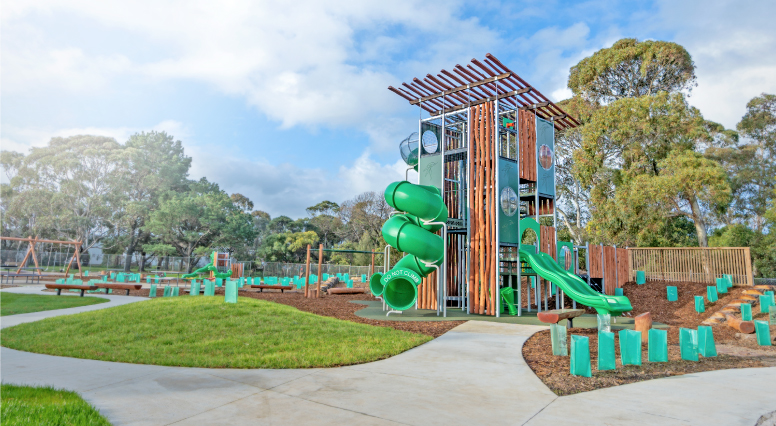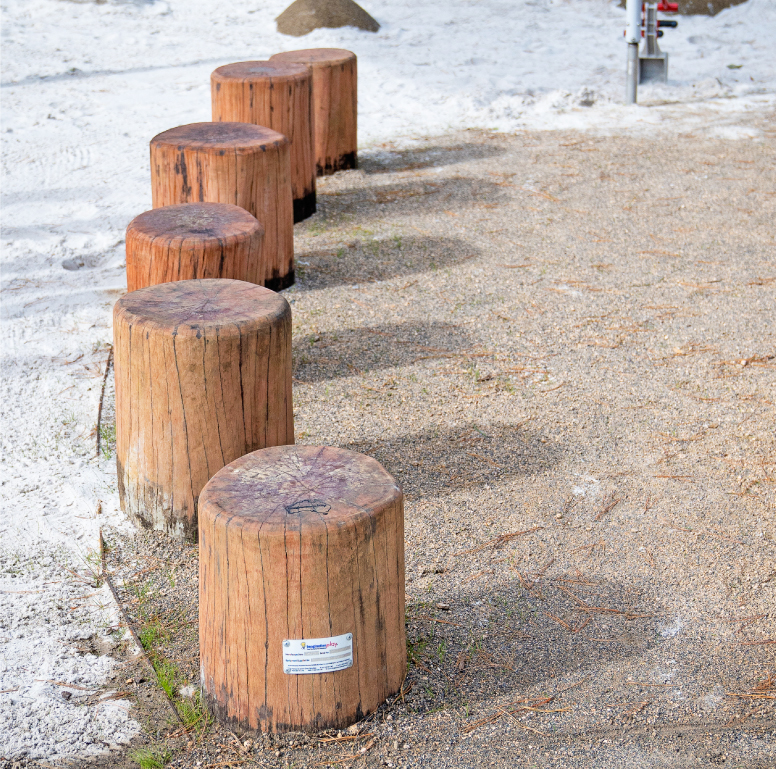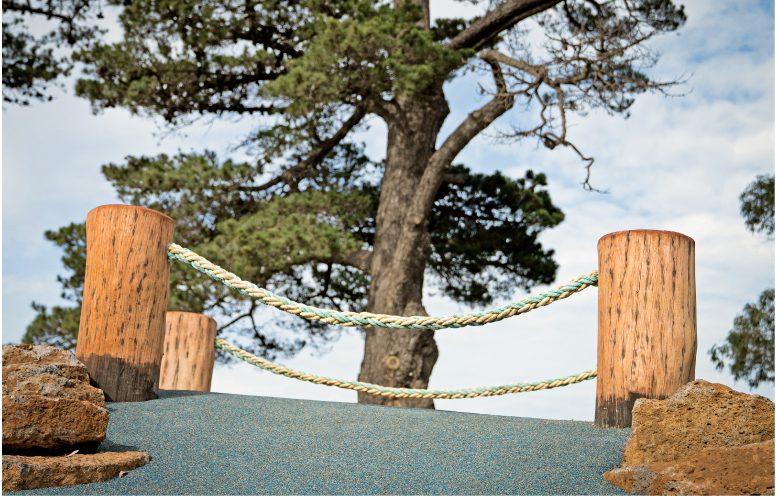The benefits of Nature Play:
Recent studies have found that a children spend less time interacting with nature than ever before. The impact of this is now starting to be understood, as more children than ever are presenting with difficulties processing sensory information and reduced motor skills. A review conducted by the University of South Australia revealed that nature play improves children’s complex thinking skills, social skills and creativity.
Nature play is actually quite a broad term. The concept involves incorporating natural elements into children’s play spaces and encouraging free play, or imaginative play using those elements. Plants, sand, water, dirt and rocks are all a part of nature play, but great nature play design takes those elements and creates a safe framework that inspires imagination.
A traditional playground needs to be safe, it needs to stand the test of time, and the equipment needs to be easy to supervise. Nature Play by Imagination Play, takes traditional playground elements and incorporates natural textures as well as the surrounding environment. This can be a complex as structural timber climbing frames with traditional playground elements like slides and monkey bars, or as simple as a timber Tepee and stepping logs. The idea is to provide children with natural sensory input, while guiding them towards unstructured play. The natural and irregular shapes found on our logs, stepping stones, balance beams and rocks help children assess and negotiate risks, while building confidence and problem-solving skills.
Nature Play in Schools:
Incorporating nature play into the school environment can be done on many scales. Encouraging kids to interact with their local ecosystem through the use of bird feeders, composting or growing plants is cost effective and utilises readily available materials. These elements can be easily incorporated into the curriculum, and often use recycled materials, or materials on hand.
Designing a nature playground, where the benefits of unstructured play and imagination thrive, can take a little more thought and planning. The first step is to consider the available space and the surrounding natural elements. Getting advice from nature play specialists can also help to define the goals of the space, and help schools to realise their vision. Kingston Reserve in Ocean Gove, VIC, is a great example of Nature Play by Imagination Play. The brief was to create a memorable experience for children, by taking traditional playground elements and incorporating them into the natural environment.

Kingston Reserve, winner of a Gold Award from the Australian Institute of Landscape Designers and Managers, 2020.

Textured sand, wooden stepping stones, timber hideaway, natural rocks and digging tools encourage kids to explore natural textures and invent games and unstructured play scenarios.

An example of natural elements incorporated with safety features like soft fall. Kids can climb and scale obstacles and mounds, while negotiating risk safely.
Getting help from the experts:
Talk to one of our design experts today and find out more about how Nature Play can be incorporated into your playground space!
Check out our nature play equipment range for your school playground equipment projects.
